|
To date, Batman has the largest Rogue's Gallery on film. The original gangsters made famous in the 1966 movie were Joker, Catwoman, Penguin and Riddler, but Batman also fought Scarecrow and Two Face in the 1940's. In the 50's Deadshot and Mr. Freeze were introduced. In the 60's we got Poison Ivy, followed by Ra's Al Ghul in the 70's, Killer Croc in the 80's, and Bane and Harley Quinn in the 90's. These villains make up the complete Rogue's Gallery on film. 1966 Batman Villians"A Visual Guide to all 37 Villians in the Batman TV Series" By Scott Neumyer Yes, in the three seasons of the original TV series, there were 37 different villains. I'm not going to bother covering all of them, just the ones who had more than one appearance. Some Villains were created just for the TV show. Of those, Egghead and Bookworm are my personal favorites. Vincent Price as Egghead and Roddy McDowell as Bookworm. For the purposes of this blog, I'm going to discuss the 13 most iconic Batman Villains represented in TV and film: Joker, Catwoman, Scarecrow, Penguin, Two Face, Riddler, Deadshot, Mr. Freeze, Poison Ivy, Ra's al Ghul, Killer Croc, Harley Quinn, and Bane. The JokerFirst appearance: Batman #1, April 1940. The Joker was created by Bill Finger, Bob Kane, and Jerry Robinson. The inspiration for The Joker was Bill Finger's image of Conrad Veidt as Gwynplaine (a man with a disfigured face) in the 1928 movie The Man Who Laughs. Jerry Robinson created a playing card sketch in 1940 based on the photo of Veidt. Left:"Conrad Veidt". The Man Who Laughs. https://en.wikipedia.org/wiki/Joker_(character)#/media/File:The-Man-Who-Laughs-(1928)-Gwynplaine.png Right: "Joker Concept Sketch". Jerry Robinson. https://en.wikipedia.org/wiki/File:Jerry-Robinson-Joker-Sketch-Card.jpg#file The Joker is a criminal mastermind; a psychopath with a warped, sadistic sense of humor. He's an expert at chemical engineering. The Joker is responsible for the murder of Robin #2 Jason Todd, and the paralysis of Barbara Gordon. He is Batman's Arch Nemesis. 1966 Classic TV SeriesCesar Romero as the Joker, costume designed by Pat Barto, makeup by Ben Nye, and hair by Margaret Donovan. Compared to the comic book original, 60's Joker's suit is pink rather than purple with a matching pink vest, rather than an orange one and matching pink gloves, instead of purple ones. They did put the pinstripes on the pants, but original Joker had pinstripes on the jacket as well. The signature makeup and hair is correct: green hair, white makeup, red overlarge smile. Cesar Romero didn't shave off his mustache for filming, so they just put the clown white right over it. 1989 BAtman: The MovieBob Ringwood concept art for The Joker. According to Bob Ringwood, all the clothes were inspired by 1940's gangster styles. Interview with Bob Ringwood: "The concept behind the Joker costume is that it took Jack Nicholson's style and enhanced it. "He adores clothes," Ringwood said, "So all we did was just re-interpret the clothes that the Joker wears in the drawings to work with Nicholson's personality. To do clothes with him is a joy ride, really, because he just loves them. He is really with you and he's suggesting things and inventing things and doing things. He's wonderful." Compared to the 1966 TV series, these four Tim Burton/Joel Schumacher films are even more colorful and saturated, with really overblown production design all around. To fit in with that world, Bob used a variety of color on the Joker costume. Jack's Joker suit is purple, but they've switched the colors of the vest and the shirt from the comic book costume. Instead of pinstripe pants, Jack wears plaid pants. The fabrics used on his shirt, vest, and cravat are very shiny and make the center of his body pop to reflect more light on his face. The surrounding fabrics are matte and absorb light. His coat is wool, wool felt hat, and suede gloves, leather shoes with built in spats. Nick Dudman designed the Joker makeup. In this movie we see him using makeup to hide his chemically bleached white skin so he doesn't look so ghoulish at the museum with Vicky Vale. Plus Bob has traded in the fedora for a beret to make him seem more artsy. 2002 Birds of PreyThe only two episodes that Joker appears in references the events of The Killing Joke by Alan Moore, in which Joker shoots Barbara Gordon, paralyzing her and forcing her to continue her crime fighting from a wheelchair as Oracle. Roger Stoneburner resembles The Killing Joke Joker, but his costume resembles the Jack Nicholson costume: purple suit, orange shirt, green tie. Roger Stoneburner played the Joker in the pilot episode (Mark Hamill did the voice). His costume was designed by Chris Karvonides-Dushenko and Sara Markowitz. 2008 The Dark KNightEarly Joker Concept Art on display at the DC Experience London, 2018. Interview with Lindy Hemming: "What we were searching for at the very beginning of how to do this Joker, were images. I was looking through images of people who might have dressed like that in the pop world and the fashion world. You can imagine Vivienne Westwood meets Johnny Rotten, Sid Vicious, Pete Doherty. You think of all those people who dress themselves up and are very interested in their appearance — and then we added into it the life of him. So whatever it is that's wrong with him — made him be like this — means he doesn't care about himself at all, really. He's very sweaty and he probably doesn't have a proper home. We were trying to make him sort of a... I don't want to say vagrant... But a back-story for him that he really doesn't look after himself." "The idea was to create someone, as you can see with these different sketches, who would dress so not because he is a clown, but rather because he's more like an eccentric modern punk, a bit like Keith Richards, far from the usual versions of the character. I looked at what Alexander McQueen was doing, for example. His hair is green because his dye messed up and turned green for no reason. All this was to make him modern and not just the caricature of a clown. In fact, actually making the costumes wasn’t that difficult, but visualizing them was. He’s a kind of dandy: the leather shoes look dandy, but they go up a bit at the tip. It's subtle, but we can see the clownish side right there." Heath Ledger in the Dark Knight. designed by Lindy Hemming. Heath's Joker wears a long purple coat, purple, pin-striped pants, a hexagonal patterned purple dress shirt, green vest and tie, multi-colored socks, with brown leather shoes. His makeup continues the tradition of white skin, green hair, red over-large smile. Interview with Lindy Hemming: "The Joker's shoes are from Milan and were selected by the costume designer because they had an upward swoop at the toe, which she thought was reminiscent of clown shoes. His tie was fashioned from a fabric that was specially woven to Hemming's specifications by Turnbull & Asser, a London-based clothier better known for dressing British royalty and the like. "Heath wanted it to be thin, so it's a '60s tie but in a Turnbull & Asser fabric. I dare say it's the weirdest tie that Turnbull & Asser has ever made," Hemming laughs. "When Heath came in and we showed him all the bits and pieces of the costume, he thought it was fantastically original and just went for it." Joker Costume on Display at the DC Experience London, 2018. Joker Makeup was designed by Peter Robb-King. John Caglioni Jr. was Heath's makeup artist. Peter Robb-King on the Joker makeup: "The Joker's make-up was also a departure from past incarnations of the character. While he retains an allusion to his familiar white-faced, sneering visage, his make-up for The Dark Knight was intended to give him a more frenetic look that also lends to its shock value. The Joker's face is covered in a white pancake that is cracked and runny in places. His eyes are thickly rimmed in black, and a sloppy red grin is painted on, extending from his mouth to his cheeks but not quite masking the terrible scars beneath. His hair is a more subtle, but still noticeable, shade of green. Make-up and hair designer Peter Robb-King remarks, "Clearly, there was a perception in the audience's mind of what The Joker would look like, but we wanted to get under the skin, so to speak, of what this character represents in this story. He is someone who has been damaged in every sense of the word, so it was important that we create a look that was not, forgive the pun, 'jokey.'" Heath Ledger's make-up artist, John Caglione, Jr., calls the application of the actor's make-up "a dance." He describes, "Heath would scrunch up his face in specific expressions, raising his forehead and squinting his eyes, and I would paint on the white over his facial contortions. This technique created textures and expressions that just painting the face a flat white would not. Then I used black make-up around Heath's eyes while he held them closed very tight, which created consistent facial textures. After the black was on, I sprayed water over his eyes, and he would squeeze his eyes and shake his head, and all that black drippy, smudgy stuff would happen." The Joker's make-up also represents a revolutionary advancement in the application of prosthetics, developed and executed by prosthetic supervisor Conor O'Sullivan and prosthetic make-up artist Robert Trenton. "They used a brand new silicone-based process that enables the prosthetics to be laid on the skin in such a way that it's seamless," Robb-King describes. "It's absolutely amazing because you can put a camera right up to the face--even an IMAX camera--and there are no issues." O'Sullivan reveals, "It took us about two years to develop the technology, but after a few glitches, we hit on it. We are now able to produce silicone pieces that are applied directly to the skin. And it blends with the skin perfectly; if you didn't know it was there, you would have a hard time seeing anything." In addition, the new process cut the application time to a fraction of what was needed in the past. O'Sullivan confirms, "The Joker prosthetics would previously have taken a good three to four hours. Instead they took about 25 minutes and looked far superior, which was great." 2014 GothamContractually, Jerome is not the Joker, however, he's got everything but the name and the green hair. That's why Jerome is a ginger and wears an orange jacket instead of the purple. DC is reserving all Joker characters for the big screen so no small screens can use the name. Cameron Monaghan as Jerome Valeska, designed by Lisa Padovani.Prosthetics Makeup designer David Presto 2016 Suicide SquadLeft: Joker graphic novel, 2008 written by Brian Azzarello and Illustrated by Lee Bermejo. Right: Joker Concept Art on display at the DC Experience London, 2018. Kate Hawley: "They're all wearing Versace and Balmain and all of that. David wanted that world. When we go into this club scene in his and Harley's world, they're not the only freaks in there. There's this high end, almost like a Studio 54 thing. It's like everyone's [****]ed up in this world and there's a normality to it. There's that beautiful book which actually i based some of the jester stuff we were playing around with." Jared Leto in Suicide Squad, designed by Kate Hawley. Joker is wearing a purple alligator coat, Arkham Asylum pants, a lot of tattoos some of which Harley Quinn is responsible for, and a cane. Hawley teased that the Joker graphic novel was the inspiration. Alessandro Bertolazzi designed the hair and makeup for this film. Rob Coutts designed the tattoos. Alessandro Bertolazzi: "Joker is the guy with the green hair. This is what I knew. Then I started looking around, and I saw Heath Ledger, Jack Nicholson, and everything else. I wanted to do something that was not the same, and Warner Bros. said, "OK, do your Joker." Usually with a big movie studio, people suggest things, have an opinion or give me guidance. With this, nothing! They give me Jared Leto, a guy with hair and a long beard. A month before starting, I studied The Man Who Laughs, the 1928 film from which the Joker was inspired. It's so beautiful. I ask David, "Who is this guy? What is his story?" David says to me, "He's also a poet." He's in love. It's a sick love, but still love. I tried to find something to make him super scary, but at the same time, a romantic. I always loved that contrast. I want a guy who is a poet, a romantic, and a devil all at the same time. He is completely sick. Then we start painting in the face. And we do the skin. We work a lot on the skin, because the skin is the most important. I wanted it to look like a really dirty, really sick. It's three hours of makeup, with six or seven layers. With the pale skin and the veins and a wound — I make it dirty. He's a guy who hasn't taken a shower in forever. This is The Joker. Then he needs something else. David said, "Why don't we give him a scar?" That's interesting. Then I decided to do seven scars. This guy is completely crazy — I imagine him in front of the mirror in the morning, where he never brushes his teeth, but instead he might take a blade and he cuts his face. Just for fun. This is my process. During the shoot, every day, every single shot, we changed something. I have more details or I have less, depending on the moment. What was incredible, Warner Bros. and DC Comics are obsessed about everything, but they never asked me to change anything in my makeup. Not one single thing. They let me do everything I wanted. Jared had to be completely in connection with me. Jared was amazing. We had a special makeup department only for Jared. When he arrived in the morning, he'd come straight to the makeup department without seeing anyone else and we'd start the process of the transformation. The Joker's part of the film, it's like another movie inside Suicide Squad. So we decided to keep him completely separate. He had the whole makeup department and it was just me and him alone for three hours. It started in silence. During this process he slowly, slowly he started to act like the Joker. And then … "Oh my god!" He becomes the Joker for real. For a month, Jared had no contact with any actors except as the Joker. You know how actors go to the lounge and get coffee? Not Jared. Never. He was the Joker, 100 percent. Margot Robbie and everyone saw him only as the Joker for the whole shooting. This makes the difference. People look at me and say, "Oh my God. It must have been so tough for you." No. It was amazing. Because I made the Joker." CAtwomanFirst appearance: Batman #1 June 1940. Catwoman was created by Bill Finger and Bob Kane. Her real name is Selina Kyle. She is a jewel-thief and has a love/hate relationship with Batman. Cover of Catwoman: Nine Lives of a Feline Fatale (2003), showing Catwoman's various costumes throughout the years. Art by Brian Bolland. 1966 The Classic SeriesThere were three women who played Catwoman in the Batman TV Series: Julie Newmar did the first season, but couldn't do the movie, so Lee Meriwether stepped into the role for a one-off. Newmar came back for Season 2. Then Eartha Kitt took over for Season 3. Pat Barto made all of the Catwoman suits from lurex. It was the height of technology infusing a stretch knit with a metallic fiber overlay. Designed by Pat Barto. 1992 Batman ReturnsMichelle Pfeiffer played Selina Kyle in Batman Returns, designed by Bob Ringwood. Her suit was made from latex. Interview with Mary Vogt: "Tim is a very visual director who's involved in everything, including costumes. As an artist, he's able to provide sketches of his basic idea, and gives you the freedom to take off from there. In the plot of Batman Returns, Selina Kyle makes her Catwoman costume herself after she's been brought back from the dead by a coterie of cats. As a result, Catwoman's suit has large, visible white stitches to reveal its homemade origins, becoming more ragged and torn as the film progresses. These ragged stitches are also intended to function as a visual suggestion that Selina has been sawn back together again in an act of physical regeneration. It's like she's wearing black glass, and with Michelle Pfeiffer in it, the suit looks like a beautiful sort of dark sculpture.'' 2004 CatwomanHalle Berry played Catwoman in her stand alone movie, designed by Angus Strathie. He designed a new silicone fabric for part of her suit. The rest was leather. Halle's suit bared way more skin than previous suits. 2012 DArk Knight RisesAnne Hathaway played Catwoman for Dark Knight Rises, designed by Lindy Hemming. "The catsuit worn by Anne Hathaway is actually a two-piece, separated by a low slung, fitted utility belt; her serrated heels double as weapons. The suit’s outer material is polyurethane coated Spandex with an embossed hexagonal pattern. Catwoman iconography is referenced subtly by night vision goggles (also functioning as a jeweller’s loupe) that flip up to form ‘ears’ when not in use." 2014 Gotham TV SeriesCamren Bicondova as Selina Kyle aka Catwoman in Gotham designed by Lisa Padovani. “Even though it’s not a period piece, per se, it’s a concept piece, so everything is very particular,” Padovani says, admitting she tries to produce the majority of the show’s costumes in-house. For inspiration, Padovani focused on the “timelessness” of the story. “I took the idea of the original graphic novels mixed with elements of ‘Blade Runner.’ And punk rock actually played a big part in it,” she notes. ScarecrowFirst appearance: World's Finest Comics #3 September, 1941. Scarecrow was created by Bill Finger, Jerry Robinson, and Bob Kane. His real name is Dr. Jonathan Crane. He is an ex-Professor of Psychology who used experimental drugs and psychological tactics to exploit the fears and phobias of his victims. 2005 Batman BeginsCillian Murphy as Scarecrow in Batman Begins, designed by Lindy Hemming. 2015 GothamCharlie Tahan played Dr. Jonathan Crane in Season 1 of Gotham, designed by Lisa Padovani. PenguinPenguin was created by Bill Finger and Bob Kane. The inspiration for Penguin was the advertising mascot of Kool cigarettes--an Emperor penguin in a top hat and cane. Penguin's real name is Oswald Cobblepot. He owns a nightclub called the Iceberg Lounge which is a front for his criminal activity. He uses high tech umbrellas as weapons. Unlike other villains, Penguin is sane and in control of his actions. Original Concept art for Penguin, 1940. First appearance: Batman #58, December 1941, but he didn't make the cover. Here's a later issue. 1966 Classic TV SeriesBurgess Meredith played Penguin in the TV Series. This costume is very accurate to the comic. Black tailcoat, pinstriped pants, white shirt, purple top hat and bow tie, white gloves, black shoes and white spats. He had a variety of specialty umbrellas for all his Bat-fighting needs. 1992 Batman ReturnsDanny Devito played Penguin in Batman Returns, designed by Bob Ringwood. Interview with Bob Ringwood: "For the Penguin, costume designers Ringwood and Vogt not only had to develop original costumes, but also the character's body shape, which differs radically from that of Danny DeVito's. They created a body 'shell' for DeVito to wear, and for his actual wardrobe, they chose a strange Victorian look that's markedly different from the tuxedo of the comic book representation. Bob Ringwood commented: ''It's almost like something out of Charles Dickens.'' Stan Winston designed The Penguin's makeup. Greg Cannom did Penguin's hands. Ve Neil was the makeup supervisor. 2014 GothamRobin Lord Taylor played Oswald Cobblepot aka Penguin on Gotham, designed by Lisa Padovani. Lisa Padovani: "There have been so many different renditions of The Penguin, I tried not to be too stuck on what has already been done and tried to look at his character in a fresh way. I am a big believer in mixing up eras and that’s what I did with his costume- he’s a complete custom build except for some accessories. He wears a one-button tux jacket influenced by the ‘20s, a vest based on a teens tux vest, a tux shirt based on a ‘70s model and a cross over tie that was based on early ‘60s rock and roll groups from England. I am not afraid to use color so his jacket lapels are an acid black/green with a reptile green vest. Purple was also a color we used on him in the vests and bow ties. The idea was to show a progression of his look- he is still not completely The Penguin everyone knows. He’s a very odd character with a painful past, so he needed to look unusual and individual without sticking out as a complete freak. That will come later." Two FaceFirst appearance: Detective Comics #66 August, 1942. Two Face was created by Bill Finger and Bob Kane. His real name is Harvey Dent and he was Gotham's District Attorney. He was hideously scarred on the left side of his face during a criminal trial by a mob boss who threw acid on him, which made him insane. He is obsessed with the duality of good and evil and this he makes all decisions by flipping his two-headed coin, which was also scarred by the acid on one side. 1989 Batman1989: Billy Dee Williams played Harvey Dent in Batman, designed by Bob Ringwood, and was supposed to continue in the role and become Two Face in Batman Returns except that didn't happen, because Joel Schumacher took over the production and cast Tommy Lee Jones instead. We finally did get a Billy Dee Williams Two Face in 2017's Lego Batman. 1995 Batman ForeverTommy Lee Jones played Two Face in Batman Forever designed by Bob Ringwood and Ingrid Ferrin. He had two suits. One business and one formal. His makeup was designed by Rick Baker. Ve Neil was the makeup artist. 2008 THe Dark KnightAaron Eckhart played Harvey Dent aka Two Face in Christopher Nolan's The Dark Knight designed by Lindy Hemming. Makeup designed by Peter Robb-King. 2014 GothamNicholas D'Agosto played Harvey Dent aka Two Face in Gotham designed by Lisa Padovani. We have yet to see Harvey turn into Two Face on the show. The RiddlerFirst appearance: Batman #140 October, 1948. The Riddler was created by Bil Finger and Dick Sprang. His real name is Edward Nygma. He is a criminal mastermind and takes delight in leaving clues in the form of riddles or puzzles for Batman to solve. 1966 Classic TV SeriesFrank Gorshin played The Riddler in the TV series, designed by Pat Barto. He had two costumes: The suit when he was plotting and the unitard when he was out committing crimes. John Astin stepped into the role for two episodes, but he's clearly wearing the same costume. 1995 Batman ForeverJim Carey played The Riddler in Batman Forever, designed by Bob Ringwood and Ingrid Ferrin. Carey had three different costumes: one sequined suit and two different unitards. The suit lit up so he could go jogging at night. Rick Baker did the makeup and Ve Neil was the key makeup artist. 2014 GothamCory Michael Smith played Edward Nygma aka The Riddler in Gotham designed by Lisa Padovani and John Glaser. DeadshotFirst appearance: Batman #59 June, 1950. 1977: Detective Comics #474 Deadshot got a costume makeover. Deadshot was created by David Vern Reed, Lew Schwartz, and Bob Kane. His real name is Floyd Lawton. He is a deadly assassin and never misses his shot. 2001 SmallvilleBradley Stryker played Floyd Lawton on the Smallville TV Series in Season 10, designed by Caroline Cranstoun and Melanie Williams. 2012 ArrowMichael Rowe played Deadshot on the Arrow TV Series, designed by Colleen Atwood and Maya Mani. Suicide SquadWill Smith played Deadshot in Suicide Squad, designed by Kate Hawley. This is the first on screen design to even come close to getting Deadshot's costume right. They eye-piece and his mask are spot on, She's turned his red outer garment into an undersuit and put tactical, black Kevlar armor over it, essentially replacing all the white areas in the costume with black. This is a good transition from page to stage, in my opinion. I feel like Hawley looked at what Marvel had done with Falcon and went down that path. Mr. FreezeFirst appearance: Batman #121 February, 1959. Mr. Freeze was created by Dave Wood and Sheldon Modoff. His real name is Dr. Victor Fries and originally he was called Mr. Zero. He is a cryogenics expert who was involved in a lab accident while attempting to cure his terminally ill wife Nora. The disaster lowered his body temperature so much that he must wear a cryogenic suit to survive. He uses a freeze ray gun freezes his victims solid. When he made his first appearance on the TV series, the producers renamed him Mr. Freeze. At that point his costume in the comics was changed to be more in line with the TV show costume. 1966 Classic TV SeriesThere were three actors who played Mr. Freeze--George Sanders in the 1st season, Otto Preminger and Eli Wallach in the 2nd Season, all designed by Pat Barto. Sanders' costume looked more like an astronaut suit. Otto gets orange eyebrows, and no hair. He wears the same grey jumpsuit and silver gloves, but they changed the helmet and gave it dials. Eli gets grey hair and eyebrows. Because all three actors who played Mr. Freeze used German/Austrian accents, Mr. Freeze became fixed in the public's mind as being Eastern European, which is why it should be no surprise that Arnold Schwarzenegger was cast as Mr. Freeze thirty years later. 1997 Batman and Robin Arnold Schwarzenegger played Mr. Freeze in Batman & Robin, designed by Ingrid Ferrin and Robert Turturice. Arnold had two costumes: his supersuit which looked a lot like his Terminator body from 1984, and a smoking jacket. His Mr. Freeze suit was powered by diamonds which apparently made it glow. It was fabricated by Terry English. They made four suits out of aluminium. It weighed 45 lbs and made Arnold claustrophobic. Each suit was powered by a back pack and had 2500 LEDs. In the first action sequence it also had wings. Arnold's costume is a major improvement over the 1966 version, although it's so high tech that it looks a lot like Tron and Terminator had a baby and now it's a teenager that has a Playstation. I have a particular fondness for this costume. The silver/blue fabrics are beautiful and the pajama pants have bears on them. Together with the polar bear slippers, and the fact that he's watching Mr. Snow Miser on all his TVs is hilarious! His makeup application took 3 hours. He wore a bald cap and opalescent contact lenses. Jeff Dawn was the makeup artist. 2014 GothamNathan Darrow played Mr. Freeze in Gotham designed by Lisa Pardoni and John Glaser. Ra's al GhulFirst appearance: Batman #232 June, 1971. Ra's Al Ghul was created by Julius Schwartz, Denis O'Neil, and Neal Adams. His name means "The Head of the Ghoul" or "Cheif Demon". He is the head of the League of Assassins. His daughter Talia has a son with Batman, Damian Wayne. 2005 Batman BeginsLiam Neeson played Ra's al Ghul in Christopher Nolan's Batman Begins, designed by Lindy Hemming. Peter Robb-King designed makeup and hair for this film. 2012 ArrowMatt Nable plays him in Arrow, designed by Colleen Camp and Maya Mani. 2014 GothamAlexander Siddig played Ra's al Ghul in Gotham designed by Lisa Padovani and John Glaser. Poison IvyFirst appearance: Batman #181 June, 1966 Poison Ivy was created by Robert Kanigher and Sheldon Moldoff. Her real name is Pamela Lillian Isley. She's a botanist obsessed with protecting endangered species and is a notorious eco-terrorist using plant toxins and mind controlling pheromones. She is sometimes romantically linked with both Batman and Harley Quinn. 1966 classic TV SeriesAlthough the TV series premiered in 1966, the same year that Poison Ivy made her debut, and ran for three seasons and a movie, Poison Ivy did not make it onto the small screen. It's a shame. The closest we got was Glynis Johns playing Lady Penelope Peasoup for three episodes. 1997 Batman and RobinUma Thurman played Poison Ivy in Batman & Robin, designed by Ingrid Ferrin and Robert Turturice. Uma gets three different Poison Ivy costumes and a lovely red wig. Her leaf eyebrows are prosthetics, however she only wears them with the first two costumes. I'm not sure why they didn't continue and give her another set for her third costume. I would have gone with red and black. 2014 GothamClare Foley, Maggie Geha, and Peyton List appear as Ivy "Pamela" Pepper aka Poison Ivy in Gotham, designed by Lisa Padovani and John Glaser. Clare Foley Lisa Padovani: "Ivy Pepper's look was inspired by punk rock god Johnny Rotten. "I'm personally very inspired by early punk and new wave and rock and roll, and it's very much a part of my life, and how I think, and how I dress, and how I live every day. So I saw the actress that they hired, and iI was happy to see that she was a real redhead. And Johnny Rotten just immediately came to mind." She saw the spirit of Johnny Rotten in the character. "I just thought, this is a street urchin that runs wild, does whatever she wants, and has got this edge to her. And I thought, let's put the holey sweaters on her that Johnny used to wear, and let's mess her hair up, and just make her look like an anarchist. So, she loved it. Everybody else seems to have loved it, so I think yeah, he was a great role model for her." Maggie Geha's costumes are in a range of green high fashion clothing and accessories. Peyton List Peyton took over from Maggie Geha at the midseason break and appeared in her first episode in March without red hair. However, this photo was released as a tease for its upcoming 5th and final season in 2019. Harley QuinnHarley's first appearance was on Batman: the animated Series in 1992. She was created by Paul Dini and Bruce Timm. Her real name is Dr. Harleen Frances Quinzel. She is a psychiatrist at Arkham Asylum and falls in love with The Joker. They have an abusive love/hate relationship. It wasn't until the next year that she appeared in the comic book. Batman Adventures #12 August, 1993. In the New 52, Harley's origin story was ret-conned and they had Joker throw her in to the same vat of acid that bleached his skin and turned his hair green. 2002 Birds of Prey2002: Mia Sara played Harley Quinn on the Birds of Prey TV series, designed by Chrisi Karvonides-Dushenko and Sara Markowitz. 2016 Suicide SquadHarley Quinn concept art on display at DC Experience London, 2018. Margot Robbie played Harley in Suicide Squad, designed by Kate Hawley. Rob Coutts designed Harley's tattoos. Harley Quinn Costume on display at DC Experience London, 2018 Killer CrocHis first appearance: Detective Comics #523 February, 1983. Killer Croc's real name is Waylon Jones, he was a side show wrestler. He has a rare genetic condition that gives his skin a crocodile-like appearance. He is a member of the Suicide Squad and is the lover of Enchantress. 2016 Suicide SquadConcept Art on display at the DC Experience London, 2018. Adewale Akinnuoye-Agbaje played Killer Croc in his only film appearance to date in Suicide Squad Designed by Kate Hawley. Alessandro Bertolazzi was the makeup and hair designer on the film. Greg Nicotero was the Killer Croc makeup supervisor. KNB EFX Group were the prosthetics manufacturer for Killer Croc. Sean Sansom was Adewale's makeup artist. BaneFirst appearance: Vengeance of Bane #1 January, 1993. Bane was created by Chuck Dixon and Graham Nolan. Bane spent his childhood in prison paying for his father's crimes. He received a classical education from a Jesuit priest while imprisoned and can speak Spanish, English, Portuguese and Latin. He is super strong and knows martial arts. He was the victim of an experimental drug which increased his physical strength but he must inhale it every 12 hours or suffer debilitating side-effects, hence the gas mask he wears. He is the only supervillain to have broken Batman. 1997 Batman and RobinJeep Swenson plays Bane in Batman and Robin. designed by Ingrid Ferrin and Robert Turturice. His costume is inspired by the stereotypical Luchador wrestling costume. Jeep was 6'4" and weighed over 400 lbs. He had been a professional wrestler before he was cast as Bane, unfortunately, he died right after the movie was released. I'm not sure where the idea for green skin came from, other than he was created in Poison Ivy's lab. But he looks a lot like the Hulk in a mask. 2014 DArk Knight RisesBane Concept Art on display at the DC Experience London, 2018. Tom Hardy plays Bane in Christopher Nolan's Dark Knight Rises designed by Lindy Hemming. "The padded vest was made as it would have been in the story, from a collection of surplus tent canvas, old webbing belts, metal plates from the door of a jeep, military meshes etc., and was designed to be worn both with and without the leather and canvas back support belt, which Bane needs due to his torture in prison as a child/teenager. These pieces were also needed in exactly identical multiples, and were a very important part of achieving his extreme silhouette; tinkering with his proportions to help make him look more bulky, animalistic and aggressive. Bane’s costume is intended to resemble a hotchpotch of influences from different parts of the world he has visited as a mercenary. The mask’s design is intentionally animalistic but functional; it masks his identity but also keeps him alive by pumping a painkilling gas into his body. It was digitally mapped to Tom Hardy’s face as a prosthetic but intended to look metal. It had to appear completely different to Batman’s cowl and could not be black." Bane Costume on display at the DC Experience London, 2018. Interviews with DesignersPat Barto:
A Closer Look: The Classic Batman TV Costumes Bob Ringwood: Reinventing the Batsuit for the Modern Era Masterful Batman 1989 Costume Concept Art by Bob Ringwood Batman Returns Angus Strathie: Catwoman's Suit's a Ripper Lindy Hemming on The Dark Knight Trilogy: The Making of Heath Ledger's Joker The Dark Knight: Ledger Takes the Joker to a Whole New Level Making the Joker: Heath Ledger and Jared Leto's Makeup Artists on the Job of a Lifetime Costume Designer Lindy Hemming Talks Catwoman, Redesigning Bane for Nolan's Universe, and More on the Set of the Dark Knight Rises Costume Designer Lindy Hemming Talks in Detail about her work on the Film We Chatted to Batman's Costume Designer, The Woman who Inspired a Generation Birds of Prey: Retro Review: Birds of Prey Gotham: Gotham's Costume Designer Lisa Padovani Describes Her Process Gotham Costume Designer Lisa Padovani Create Villainy With Style Gotham Costume Design Origins Gotham costume designer Lisa Padovani is totally fine with being called a control freak Suicide Squad: Esquire Interview, Aug. 2, 2018 Making the Joker: Heath Ledger and Jared Leto's Makeup Artists on the Job of a Lifetime Suicide's Squad Margot Robbie and Costume Designer Kate Hawley on Harley Quinn and Joker's Mad Love Suicide Squad Joker influenced by Joker Graphic Novel Joker's Tattoos Define the Character in Suicide Squad
0 Comments
Leave a Reply. |
CategoriesArchives
July 2024
|

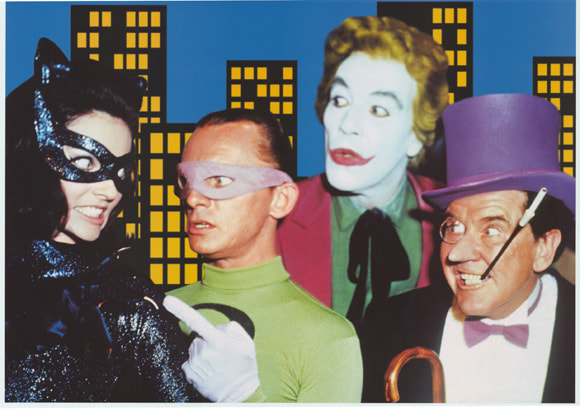






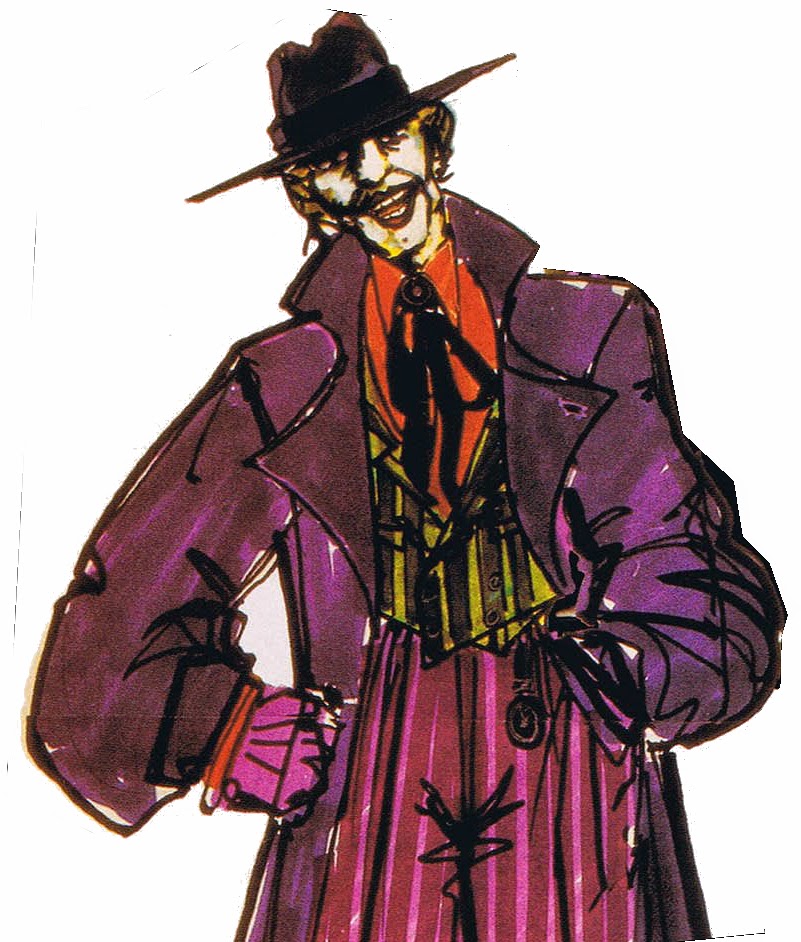
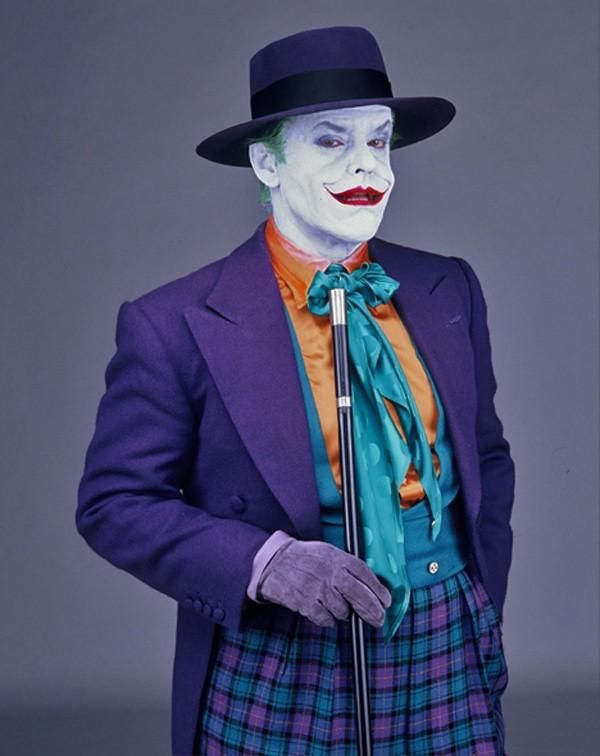















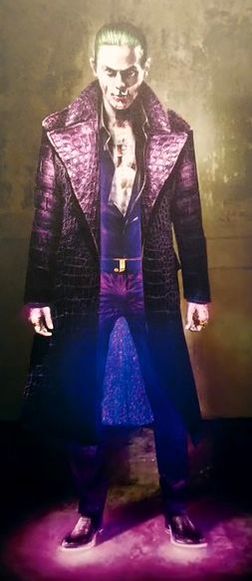







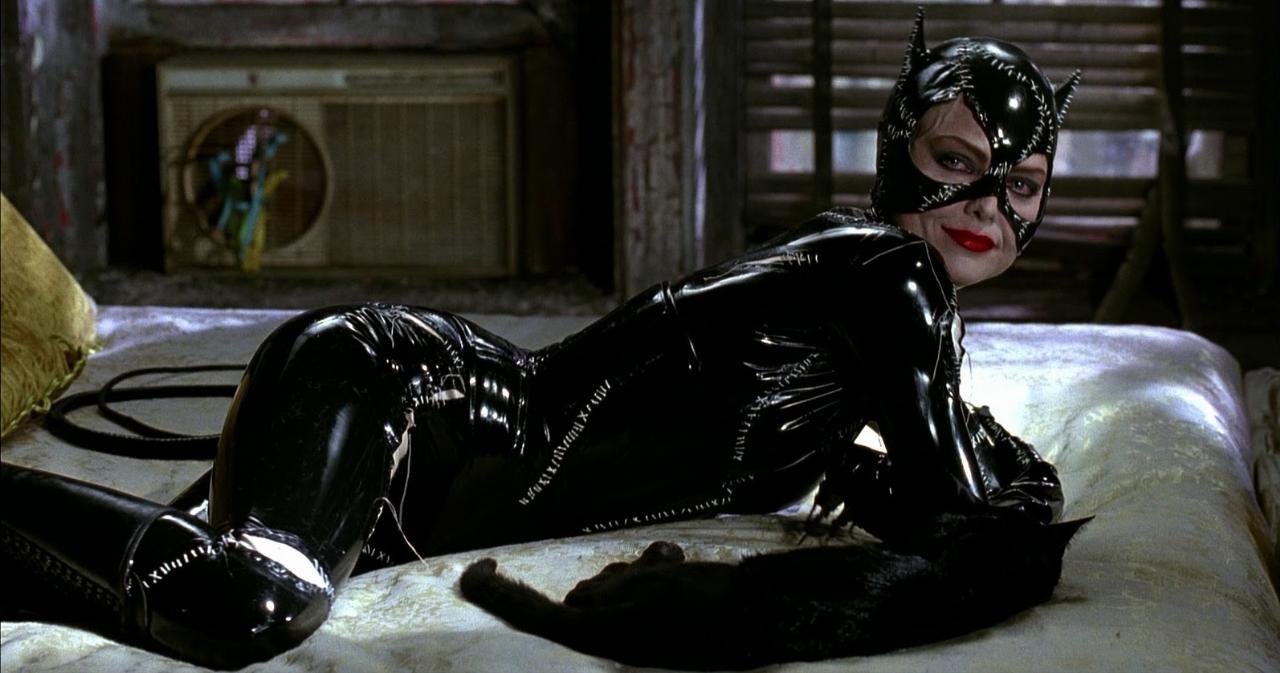

















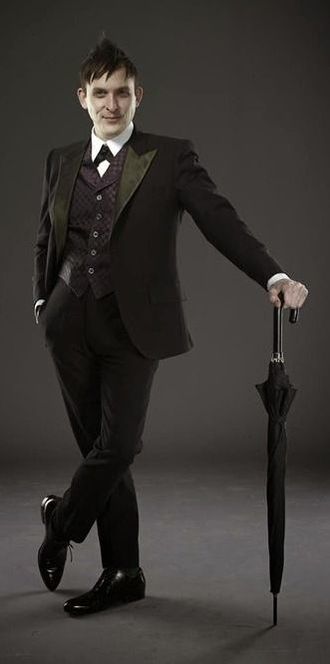









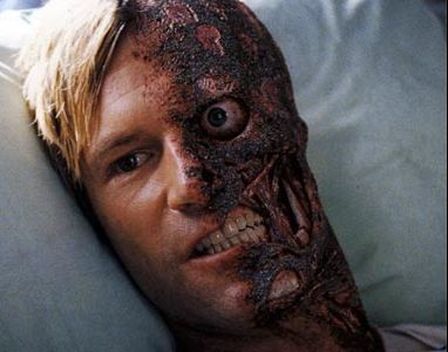

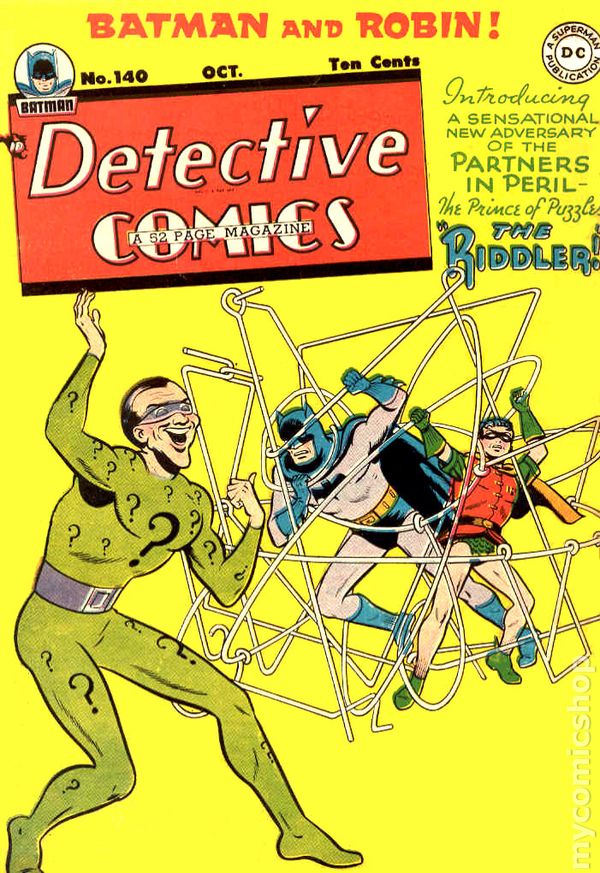







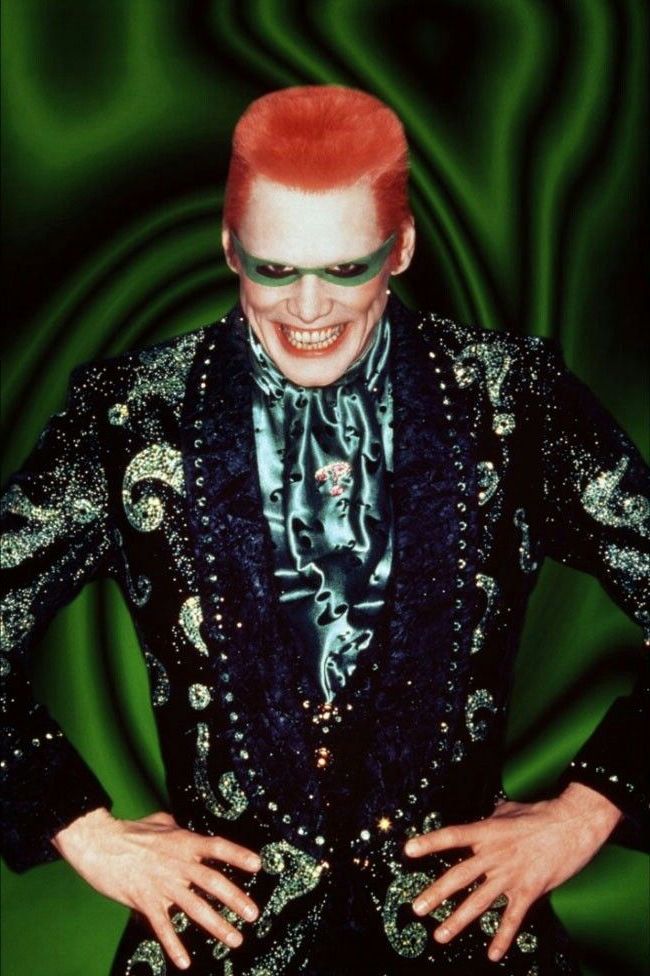
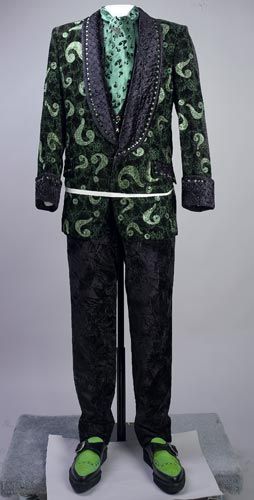











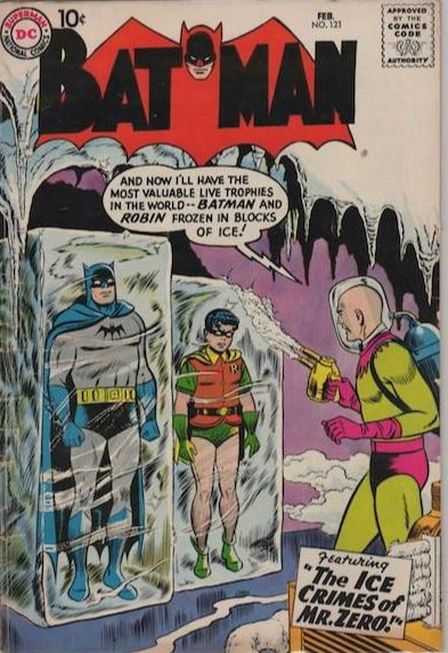









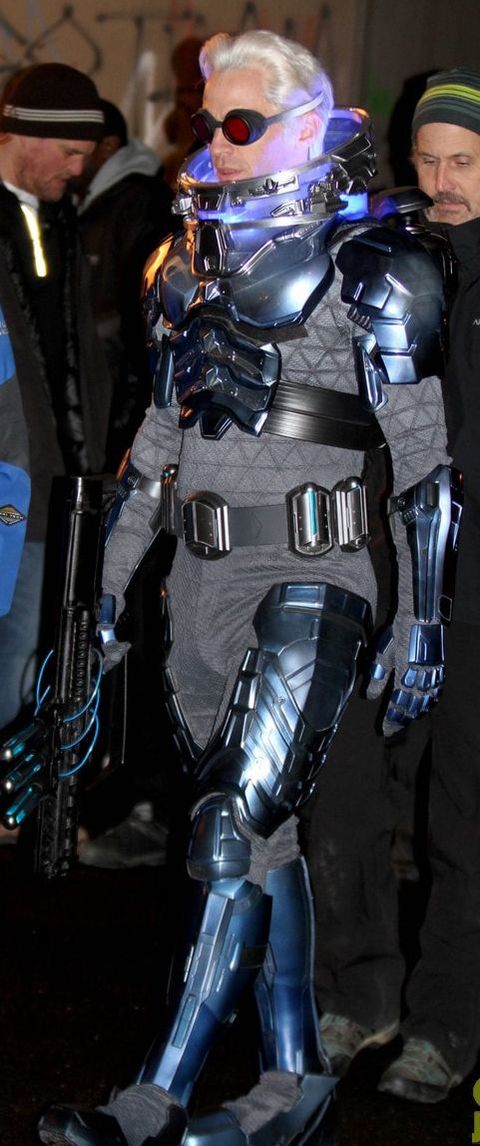












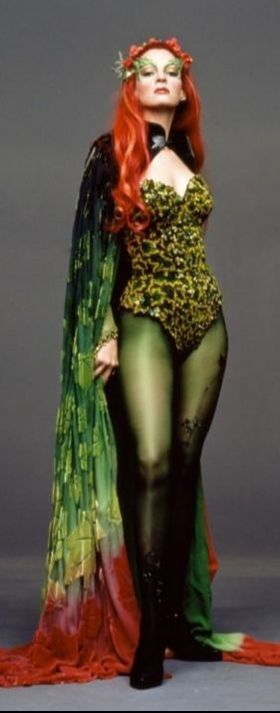






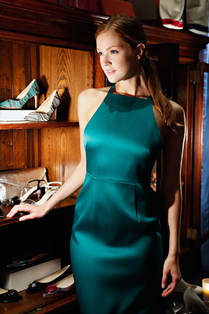











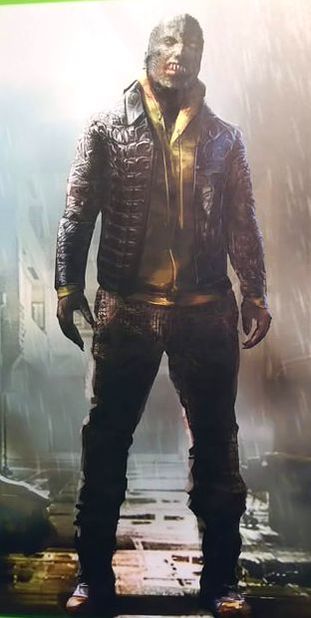





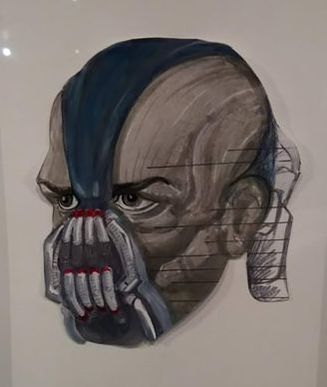


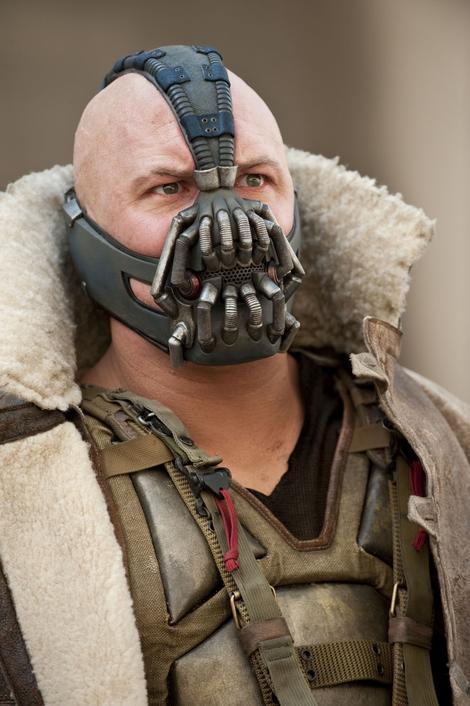

 RSS Feed
RSS Feed